Villacidro:
A WARTIME AIRBASE IN SARDINIA.
A few months before Italy's entry into W.W.2 a number of auxiliary airfields
were established m Sardinia, among them one at Villacidro, near Cagliari.
A large part of a plain existing on the spot was levelled, some 10 km(about
6 miles) off the little town. A large airstrip was created that allowed take-offs
and landings to be carried out in any directions. The result was the largest
airfield in Sardinia throughout W.W.2.
On 3 june 1940,8° Stormo B. T. (land-based bombers), led by colonnello
pilota Vittorio Ferrante, and which formed - together with 32°Stormo based
at Decimomannu - the 10 a Brigata Aerea under generale Cagna, was flown into
the new air base from Alghero.
8° Stormo was formed by two Gruppi: 27°Gruppo with 18° and 52°
Squadriglie and 17 aircaft, and28° Gruppo with 10° and 19° Squadriglie
and 15 aircraft, their equipment consisting of S.79 three-engine bombers.
Its personnel included 429 men, among them 43 CO and 38 NCO pilots.
Facilities were quickly procured and arranged to make the base fully operational.
The main runways featured lengths ranging from 1,300 to nearly 2,000 m (about
1,421 and 1,830 yds., respectively), plus a number of decentralised airstrips
had been mode available where aircraft could be parked. In summer, however,
wind and taxiing aircraft lifted clouds of dust,
whereas in winter the clayey ground melted and sensibly hampered aircraft
ground movements.
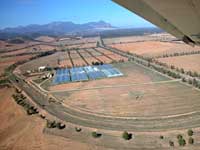
By l0 June 1940 the air base was fully operative. From there, in the following
days, the S.79s took off and attacked French targets in Corsica (airfields
at Valinco, Ajaccio and Calvi)and the Bizerte harbour in Tunisia.
The mission over the last target found the harbour fully lit, so the Italian
bombers could carry out their jobs easily and, undisturbed.
On night missions, all aircraft took off individually, so that no mass attacks
were carried out.
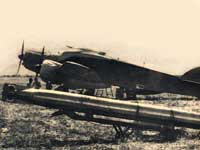
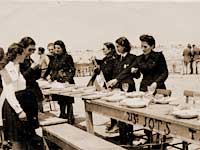
After France surrendered, the units starting from this base were able to
cause heavy losses among British ships sailed from Gibraltar in attempts at
bringing supplies to beleaguered Malta.
In the afternoon of 21 June, 52° and 10° Squadriglie under Generale
Cagna took off from Villacidro and succeeded in sinking a British warship.
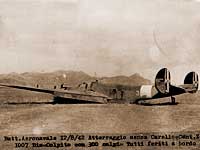
On 9 Juny, Italian secret agents operating in Spain reported that the British
"H Force" had left Gibraltar bound for the eastern Mediterranean.
The formation included battleships Hood, Revenge and Valiant, aircraft carrier
Ark Royal and 16 miscellaneous destroyers and heavy cruisers.
On 9 July, about 07.00 p.m., 40 bombers from 10a Brigata, including 8°
Stormo from Villacidro and 32° Stormo from Decimomannu, led by generale
Cagna intercepted the British naval force near the island of Ma/orca and for
more
than one and half hours, attacking in successive waves, bombed the enemy units.
Battleship Hood was heavily damaged, aircraft carrier Ark Royal had its flying
deck heavily hit with the loss of 7 aircraft aboard. Some escorting destroyers
were also heavily hit. One S. 79 was shot down, 5 others were damaged but
the rest could be flown back to their bases. For this exploit, 8° Stormo
was awarded a silver medal.
On 1s August, 10a Brigata, led by generale Cagna, took off bound for the
island of Formentera to intercept a British convoy mode up of three battleships,
two aircraft carriers and 16 cruisers and destroyers. Out of 8° Stormo,
18°, 52°
and 10° Squadrìglie took part in the attack. Battleship Resolution
and a destroyer were hit.
Some S.79s, including the one with generale Cagna aboard, were shot down with
the loss of their crews.
One week later the air base command was transferred from colonnello Ferrante
to colonnello Bonini. In the next month the 10" Brigata command moved
to Cagliari and 8° Stormo was deployed elsewhere. The air base was practically
demobbed and a small force led by a lieutenant was left to guard its facilities.
But less than two months later the s.79s of 28° Gruppo, 8° Stormo
B.T., reappeared and maggiore Michele Banchio was appointed the new base commander.
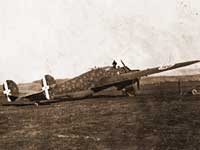
In April I941 all refitting works to the already existing facilities were
resumed and erection of new buildings was started, while28°Gruppo was
being moved to another air base.
Only a few aircraft were left on the spot and the base activity dropped
to a minimum. Maggiore Banchio was replaced by tenente Gasole. In the meantime
51° Gruppo, equipped with three engine Cant Z 1007 bis had been flown
in. In November the air base command was entrusted to maggiore Bonacossa,
the former leader of 51 ° Gruppo A.O. (Eastem Africa) equipped with 10
Ro.37 recce machines from 28°Squadriglia.
In January 1942 the base command was entrusted to tenente colonnello Manenti,
who had arrived there with 51° Gruppo B.T./R.S. (R.S.standing for strategical
reconnaissance unit), made up of 212° and 213" Squadriglie, both
equipped with Cant Z 1007 bis. In the following months the Villacidro airfield
was temporarily made the base of famed units, such as 9°, 11°, 32"
and 37° Stormi. These units successfully took part in the famous air-sea
battles waged in mid-June and mid-August 1942.
Thè 51° Gruppo carried out, in both encounters, reconnaissance
and shadowing missions against the British air and sea forces.
Its activity was fiercely opposed by British fighters, which shot down many
aircraft in the course of hard clashes.
Part of the Italian crews involved could escape with difficulty, but casualties
were nevertheless high.
On 12 August a strange aircraft wholly yellow-painted was taken of from
Villacidro. This was a special one-off crewless radio-controlled flying bomb
in the history of aviation. It was being guided towards the British fleet
but, owing to a defective capacitor, the pilotless aircraft went out of control
and ended up crashing against the Little Atlas mountains. The bewildered local
French authorities in vain searched for the corpses of a crew among the wrecks.
Throughout 1942 Luftwaffe units began increasingly pouring in Villacidro,
in particular Ju 88-equipped KG.26, 60 and 77 (KG stood for Combat Wing),
although the base command was left in Italian hands. Italian and German
crews jointly operated against enemy forces.
In December 88" Gruppo B.T. joined the air base, but more and more aircraft
were missing from their missions while the German presence was growing increasingly
pressing.
January 1943 saw the Germans taking everything in their hands and starting
the project and execution of new works. Then more German units poured in:
KG.30 and 60 permanently, other units only occasionally. At this point, the
Allies started to seriously consider the elimination of that airfield.
On 17 February two American medium bombers formations were bound for Villacidro
airfield. One of them, 17th Bombing Group, personally led by Tokyo raid-famous
general Doolittle, reached the air base but could not bomb it
because of bad visibility.
The other unit, 310th Bombing Group mistakenly flew into another valley and
bombed the built-up area of Gonnosfanadiga, where its fragmentation bombs
caused several casualties among civilians.
On 16 March, 88° Gruppo left Villacidro and on 31st of the some month
several B-17 Flying Fortresses dropped over 3,000 fragmentation bombs and
caused heavy damage. More similar raids followed on 15 and 27 April, on 11,19,
20, 21, 26, 27 May and on 7 and 18 June. In that month about 1,500 German
flyers were staying at Villacidro.
On l0 July the Germans, both because of their increased distrust towards
their Italian allies and for fear of possible landings by Amerìcan
commando units in Sardinia, began burying mines all over the airfield. On
10 September, before loading men and equipment aboard their trucks, the Germans
had their mines blasted, thus making all runways useless.
In November the first American ground personnel of 17th Bombing Group and
the engineers of 51st Service Squadron began arriving at Villacidro. Runways
were restored and both bombers - the B-26 Marauders - and their crews started
pouring in.
January 1944 saw the arrival of French air units. These were the 31e, first,
and the34e, later, Escadres de Bombardement Moyen. Both units were armed and
supplied by the Americans and under the 42nd Bombing Wing.
Both American and French bombing units started a systematic destruction
work aimed at bridges and railway junctions all over northern Italy in order
to disrupt the supply lines of the Germans, who were effectively hampering
the
Allied armies' advance along the Italian peninsula. Among others, 17th Bombing
Group took part in the bombing of Montecassino abbey and the support of allied
landings at Anzio. Precision bombing missions were also carried out against
targets in Florence and some areas in Rome.
On 19 May 1944 général De Gaulle reviewed Free France troops
camped near the air base.
The airfield structures and facilities were generally improved and
everything was taken care of to make living easier to the new occupants.
In September and October 1944 both Americans and Frenchs left the Villaci-
dro air base and moved to other bases closer to thefront line. Sardinian shepherds
and peasants repossessed the airfield area, and today very little has been
left in memory of the fervent activity that had developed there only half
a century before.
OPERATION "CANARINO"
Throughout W.W.2 Italian bombers were plagued by the lack of reliable bombaiming devices, the availability of big-calibre bombs and poor bomb-carrying capacity.
(Pag. 175)
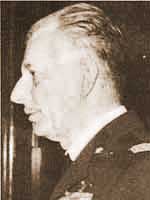
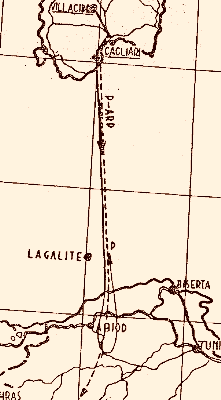
Ferdinando Raffaelli - Operation "Canarino"
On the basis of these considerations, colonnello Ferdinando Raffaelli conceived an unusual solution, consisting in loading the highest possible quantity of explosives aboard a single crewless aircraft and radio-controlling it onto its predetermined target, that was thus to be destroyed by a direct impact.
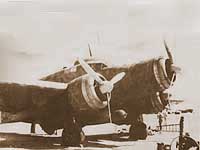
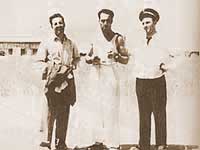
Cerini, Badii, Montuschi
This solution offered many advantages: it allowed a crew to be spared, and a higher load of explosives to be carried since no fuel was needed for a return flight. Moreover, old machines nearing the end of their useful life could be advantageously used to this purpose.
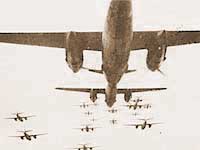
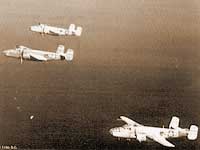
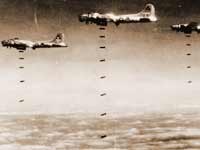
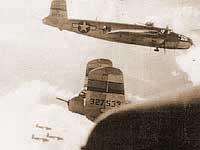
Two aircraft were made available for this unusual type of mission. Initially,
two S.79s were chosen, one as the flying bomb (and therefore called A.R.P.
for radio-controlled aircraft) and the other as the remotely-guiding aircraft
(in turn called E for radio-controlling aircraft).
Later, the P.-machine was replaced by a Cant Z 1007 bis.
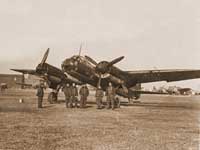
The procedure to be adhered to was as follows: the A.R.P. was taken off
and set on its pre-determined route by a pilot who subsequently abandoned
the aircraft and parachuted to the ground.
The P. machine followed at a distance of About 5OO m (1,650 ft) that grew
to 4,000 m (13,120 ft) in proximity of the intended target.
The flight was to have been carried out at speeds between 320 and 370 km/h
(200 to 230 m.p.h.) at an altitude of 6,000 m (20,000 ft) over a range of
about 1,200 km (750 miles).
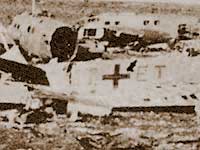
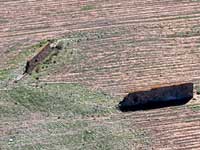
To improve the visibility of the A.R.P. from the R-aircraft, the former
was painted yellow overall, hence the "Canary" nickname.
A particular care was taken in the choice and installation of the appropriate
sending and receiving devices.
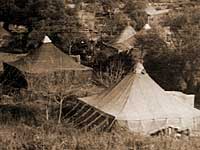
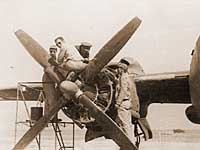
On 12August 1942, at 01.00 p.m. the two aircraft took off from the Villacidro
air base. Maresciallo Badii took off on the A.R.P., set it on its planned
route, then parachuted to safety. Colonnello Raffaelli followed with its CantZ
1007 bis radio-controlling the S. 79 flying bomb, bound for the British fleet
near the Tunisian coast.
But off the island of La Galite, probably on account of a defective capacitor
on the S.79, the latter escaped the radio-control from the R-aircraft, began
turning westward, flew beyond Tunisian borders and crashed on the sides of
a Little Atlas mountain at an altitude of 1,800 m (6,000 ft) and 70 km (43
miles) off the town of Philippeville. Following this failure, the P-aircraft
had to be hurriedly flown back to its base.
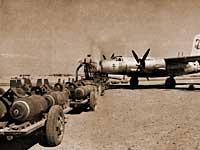
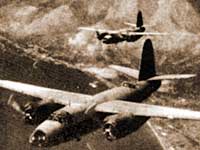
Disconcerted French authorities in vain searched, on the following day,
for the corpses of the crew and concluded that all people aboard must have
"vapourized".
Later, specific drones were designed and built, to be directed by Macchi
C.202 fighter. In the spring of 1943 a few examples of the A.R. had been made
ready by Aeronautica Lombarda.
A first use was planned by August 1943, but no attempt was mode since the
armistice with the Allies was at the door.
Translation by R. Abate"Villacidro:
Una base aerea in Sardegna....."
